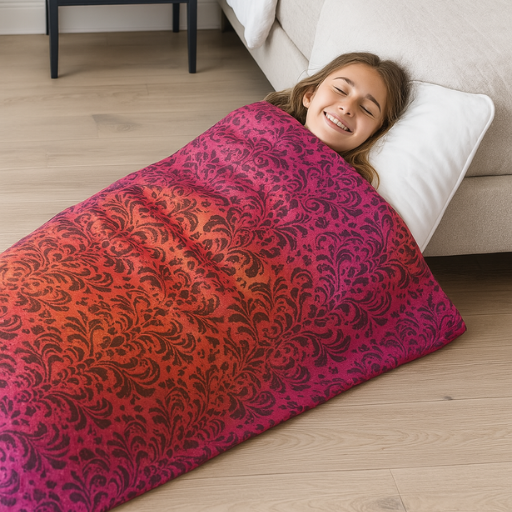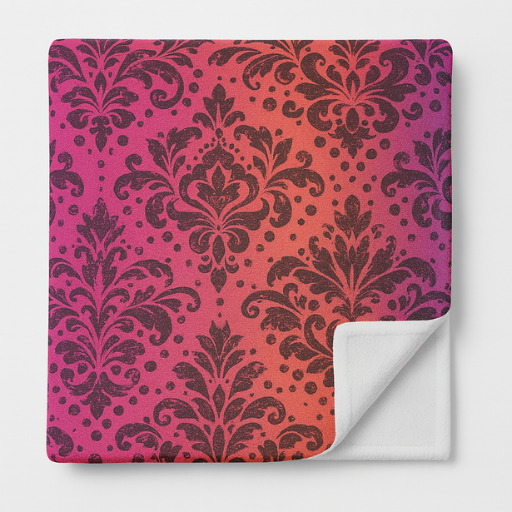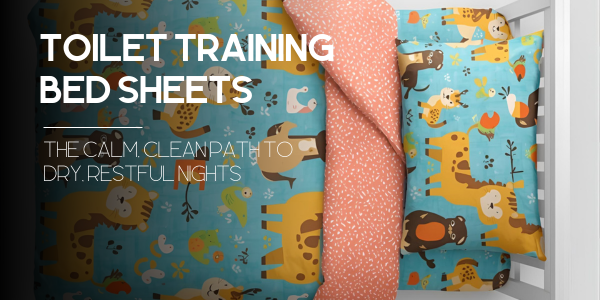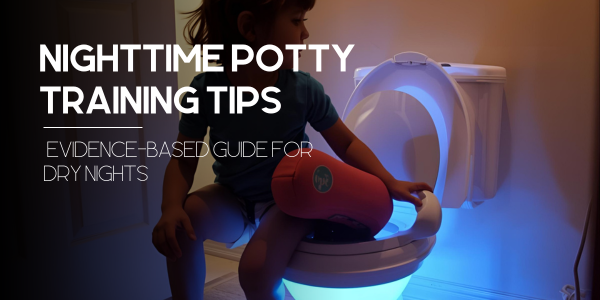10 Ways To Clean A Mattress After Bed Wetting
If you’re reading this, chances are last night’s uh‑oh left more than just sheepish smiles and a damp spot. Memory‑foam is famous for its cloud‑like comfort, but that same open‑cell structure acts like a sponge, trapping liquid (and odor) deep inside. Don’t panic or rush to replace your mattress just yet! Below, you’ll discover 10 proven, science‑backed ways to banish stains, neutralize smells, and restore that luxurious foam to “good‑as‑new” status.
Each method is kid‑, pet‑, and parent‑friendly, relies on household staples or
affordable cleaners, and is laid out step‑by‑step so you can take action the
moment the alarm bells (or smoke detector–level odors) start ringing.
1. The Classic White‑Vinegar Neutralize
White vinegar is a mild acetic acid that breaks down the alkaline uric crystals in urine—the real villains behind that lingering funk. It also acts as a natural disinfectant, leaving your foam fresh without harsh chemicals.
What You’ll Need
- Distilled white vinegar (plain, 5% acidity)
- Clean spray bottle
- Two absorbent towels or thick paper towels
- Standing fan or open window for airflow
- Optional: 3‑4 drops of lavender or tea‑tree essential oil
Step‑by‑Step
- Blot, don’t scrub. Press a dry towel firmly onto the wet area to lift as much liquid as possible. Replace when saturated.
- Mix & mist. Combine equal parts white vinegar and lukewarm water in the spray bottle (add essential oil now if you’d like a spa‑like scent). Lightly mist the stained zone until it feels damp—but not soaked.
- Wait 10–15 minutes. Let the vinegar solution work its odor‑busting magic.
- Blot again. Using a fresh towel, press to absorb moisture and lifted contaminants.
- Air it out. Prop the mattress upright or lay it flat in a well‑ventilated space. Aim a fan at the spot or open a window. Complete drying usually takes 6–8 hours.
2. The Baking‑Soda Odor‑Lift
Baking soda’s porous crystals pull moisture and odor molecules out of memory‑foam like a magnet. Its natural alkalinity also neutralizes acidic urine compounds, leaving the surface pH‑balanced and fresh.
What You’ll Need
- 1–2 cups of plain baking soda (sodium bicarbonate)
- Fine‑mesh sieve, shaker jar, or clean salt shaker
- Upholstery or HEPA vacuum with a soft brush attachment
- Optional: A few drops of vanilla or eucalyptus essential oil
Step‑by‑Step
- Dry first. Make sure the area is no longer wet to the touch. Blot or air‑dry until merely damp; baking soda works best on moisture that’s already receded into the foam.
- Dust generously. Using your sieve or shaker, create an even snow‑like layer of baking soda over the entire stain (about ¼‑inch thick). For fragrance, mix the soda with 2–3 drops of essential oil before you shake.
- Let it lounge. Leave the powder to work for at least 6 hours; overnight is odor‑obliterating gold.
- Vacuum it up. Glide the upholstery nozzle slowly over the area, overlapping passes to collect every grain.
- Sniff test. Still catch a whiff? Re‑dust and repeat—persistent odors may need a double treatment.
Pro Tip: For visible yellowing, whip a paste of baking soda and water, dab it on the spot, let dry into a crust, then vacuum—the gentle abrasion lifts surface staining without scuffing the foam.
3. Enzyme Cleaner Power‑Play
Enzymatic cleaners unleash microscopic “cleanup crews” that digest the proteins, fats, and uric acid in urine. Once the food source is gone, odors and bacteria vanish for good instead of merely being masked.
What You’ll Need
- Pet‑ or baby‑safe enzymatic urine remover (look for “bio‑enzymatic” on label)
- Clean, white microfiber cloths or paper towels
- Plastic wrap or a large silicone mat (to keep the area damp)
- Fan or open window for drying
- Optional: Wet/dry shop‑vac for deep extraction
Step‑by‑Step
- Immediate blot. Press a dry cloth onto fresh urine to wick away as much liquid as humanly possible—speed equals success with enzymes.
- Saturate thoughtfully. Spray or pour enzyme cleaner until the foam is damp all the way through the stain’s depth. Tip: Outline the spot with painter’s tape first so you know how far to treat.
- Seal in the science. Cover the treated area loosely with plastic wrap for 15–30 minutes. Enzymes need moisture to stay active and “eat.”
- Lift & blot. Remove plastic, then dab with a clean cloth to pull up dissolved contaminants.
- Rinse lightly. Mist with plain water, blot again. This removes residual cleaner so it doesn’t keep foaming inside the mattress.
- Air‑dry completely. Position a fan or open a window; full drying can take 8–12 hours depending on thickness.
Pro Tip: If you own a wet/dry vacuum, perform a suction pass immediately after step 4 and again after rinsing—mechanical extraction speeds drying and yanks out deeply embedded residue.
Color‑Safety Note: Always spot‑test enzyme cleaners on an inconspicuous corner of the mattress cover; some fabrics may darken when wet and lighten again after full drying.
Bed Wetting Facts
Did you know that the average bed wetter will go through 540 disposable bed wetting pads in one year? Costing upwards of $500!
Wouldn't a one time solution that is
- 5x cheaper
- Washable
- Reusable
- Organic
- Designed To Empower Kids
Be a better option? Click the learn more button to see how bed wetting throw blankets are changing in Incontinence
4. Hydrogen‑Peroxide Paste (Emergency Spot‑Fix)
Hydrogen peroxide is a mild oxidizer that lifts organic stains and breaks down odor‑causing bacteria on contact. When combined with baking soda and a drop of dish soap, it forms an effervescent paste that travels deep into foam cells, fizzing grime to the surface for easy removal.
What You’ll Need
- 3% hydrogen peroxide (fresh bottle for max potency)
- 2 Tbsp baking soda
- 1 small drop of clear, mild dish soap
- Non‑metal bowl & spoon (plastic or silicone)
- Old toothbrush or soft cloth
- White microfiber towel for blotting
- Optional: Cornstarch to thicken if mixture feels runny
Step‑by‑Step
- Mix the magic. In your bowl, stir peroxide, baking soda, and dish soap into a loose paste (think foamy toothpaste). Add a pinch of cornstarch if you need extra body for vertical spots.
- Patch test. Dab a pea‑size dot on an inconspicuous seam. Wait 5 minutes to ensure fabric colorfastness.
- Apply & fizz. Spread a thin layer over the stain with the toothbrush, working in gentle circles. You’ll hear a satisfying sizzle—science in action!
- Let it dry. Leave paste in place until it hardens into a chalky crust (30–45 minutes).
- Lift & blot. Flake away the dry crust, then blot with a damp towel to pick up residue.
- Air‑dry thoroughly. Prop up the mattress edge and aim a fan at the treated spot until bone‑dry.
Caution: Peroxide can slightly lighten darker fabrics. Restrict use to small, stubborn spots and follow with a color‑safe fabric refresher if needed.
5. Steam‑Blitz (When Time Is Short)
Super‑heated vapor penetrates memory‑foam cells, loosening urine salts and killing odor‑causing microbes without drowning the core. Because steam adds minimal moisture, dry‑time is drastically shorter than soaking methods.What You’ll Need
- Handheld garment steamer or upholstery steam cleaner
- Clean, white towel for blotting
- Standing fan or dehumidifier
- Optional: Light spritz of enzyme cleaner for pre‑treatment
Step‑by‑Step
- Pre‑blot. Start with a dry towel to lift surface moisture.
- Prime the steamer. Fill with distilled water and heat until consistent vapor flows.
- Hover & sweep. Hold nozzle 1 inch above the stain; move in slow 3‑inch arcs for 60–90 seconds. Avoid pressing the head directly onto foam to prevent water pooling.
- Quick blot. Press the towel onto the warm fabric to capture loosened contaminants.
- Repeat if needed. Two passes usually conquer fresh accidents; older stains may need a third.
- Turbo‑dry. Stand the mattress on its side, aim a fan or run a dehumidifier. Most steam‑cleaned spots dry within 2–3 hours.
Speed Hack: Pair steam with a brief enzyme‑spray pre‑soak (5 minutes) for double‑duty stain and odor removal—then steam as above.
6. Vacuum‑Extract Wet/Dry Shop‑Vac
A wet/dry vacuum applies immediate suction, removing liquid from the deepest layers of memory‑foam before it spreads or soaks through. Follow with a rinse cycle and you’ve essentially performed a mini professional extraction at home.What You’ll Need
- Wet/dry shop‑vac with clean hose and upholstery nozzle
- Warm water in a spray bottle or squeeze bottle
- Pet‑/baby‑safe enzymatic cleaner (optional but recommended)
- Clean microfiber towels
- Fan for accelerated drying
Step‑by‑Step
- Immediate suction. Power on the vac and press the nozzle firmly over the wet area, overlapping passes until no more liquid appears in the tank.
- Enzyme soak. Lightly mist the stain with enzyme cleaner and wait 5–10 minutes to break down organics.
- Suction round #2. Vacuum again to pull out the enzyme solution along with dissolved residue.
- Rinse & extract. Spray warm water onto the spot (don’t drench), then vacuum immediately. Repeat until the extracted water runs clear.
- Blot edges. Dab surrounding fabric with a dry towel to prevent moisture rings.
- Dry fast. Angle a fan at the zone or set mattress upright in sunlight; complete dryness usually achieved in 4–6 hours.
Pro Tip: Sprinkle baking soda over the area once it’s nearly dry, let sit 30 minutes, then vacuum one last time for a final freshness boost.
7. Sun‑Bath & Fresh‑Air Cure
Mother Nature’s two‑part formula—UV rays and steady airflow—acts as a natural sanitizer. Sunlight breaks down odor compounds and inhibits bacterial growth, while cross‑breezes whisk away lingering moisture trapped deep in the foam.
What You’ll Need
- A sunny, low‑humidity day (UV index 4+ is ideal)
- Flat outdoor surface or sturdy patio furniture
- Light‑colored sheet or towel (to prevent fabric fade)
- Optional: portable fan or box fan for extra airflow
Step‑by‑Step
- Prep the surface. Lay a clean sheet/towel over your porch, deck, or picnic table to protect the mattress cover.
- Sun‑side up. Place the stained side facing direct sunlight. Leave for 2–3 hours while rotating every 30 minutes to evenly bathe the foam.
- Flip & repeat. Turn the mattress so the opposite side also gets 1–2 hours of rays and airflow.
- Air‑cool indoors. Bring it back inside, prop upright, and let a fan run for another hour to dissipate residual warmth and humidity.
Pro Tip: Apartment dweller? Angle the mattress near a bright window, crack both upper and lower panes, and set a fan to pull indoor air outward— it mimics an outdoor draft in tight quarters.
8. Clear High Proof Mist Deodorizer
Clear, high‑proof (40% ABV or higher) evaporates quickly, carrying odor molecules away in the process. Because it’s less aggressive than rubbing alcohol, it won’t dry out or warp delicate memory‑foam cells.What You’ll Need
- Unflavored vodka (the cheaper, the better—save the top‑shelf for cocktails)
- Fine‑mist spray bottle
- Optional: 2–3 drops of essential oil (citrus, peppermint, etc.)
- Fan or open window
Step‑by‑Step
- Fill & fragrance. Pour vodka into the spray bottle; add essential oil if desired and shake gently.
- Light mist. Hold the nozzle 6–8 inches from the surface and apply a thin, even layer—avoid saturation.
- Air it out. Allow the mattress to stand in a well‑ventilated room for 30–45 minutes. The alcohol will evaporate, taking odors with it.
- Final sniff test. Detect any faint scent? Repeat once more or move on to Method 9 for heavy‑duty odor locking.
Caution: Stick to clear vodka only. Flavored or colored spirits can leave sugar or dye residues that invite new odors.
9. Activated‑Charcoal Overnight Draw
Activated charcoal is carbon that’s been “super‑charged” with millions of tiny pores, giving it an enormous surface area for adsorbing odor molecules and residual moisture. Think of it as a silent, scent‑eating sponge.
What You’ll Need
- 4–6 breathable charcoal sachets or two cups of loose granules
- Old cotton socks or cheesecloth (if using loose charcoal)
- Fitted sheet to lock sachets in place
- Vacuum with upholstery attachment (for cleanup)
Step‑by‑Step
- DIY pouches. If using loose granules, fill socks/cheesecloth, tie securely, and flatten the bundles.
- Sachet placement. Arrange them directly over the former stain, spacing every 4–5 inches to form a charcoal “quilt.”
- Sheet & sleep. Cover with a fitted sheet and leave overnight (6–8 hours minimum).
- Remove & refresh. Discard or recharge sachets in sunlight for future use. Vacuum any stray particles.
Pro Tip: Pair charcoal sachets with a dehumidifier in humid climates for a one‑two punch: the dehumidifier pulls water vapor, the charcoal traps odors left behind.
10. Commercial Mattress‑Cleaning Machine Rental
Professional‑grade extractors blast a heated cleaning solution deep into the mattress and immediately vacuum it back out, removing more liquid, proteins, and embedded microbes in one pass than any household tool can manage. It’s the closest you’ll get to a pro service—without paying pro prices.
What You’ll Need
- Rented upholstery/extractor machine (look for “hot‑water extraction”)
- Low‑foam, enzyme‑boosted upholstery detergent
- Extension cord & nearby sink or tub for refills
- Protective gloves and eye wear (splash guard)
- Box fan or dehumidifier for quick dry‑down
Step‑by‑Step
- Pre‑inspect. Note any weak seams, rips, or labels that warn against high heat; patch or tape them to prevent water intrusion.
- Load & test. Fill machine with warm water and the recommended dose of detergent. Test a 6‑inch corner to confirm no color‑bleed.
- Slow extraction pass. Starting at one edge, pull the wand toward you at a pace of ~1 inch per second. Overlap each stroke by 50% for total coverage.
- Second rinse pass. Empty dirty tank, refill with clear warm water, and repeat passes to flush out residual soap.
- Double‑fan dry. Stand the mattress on its long side, place a box fan at each end, or pair one fan with a dehumidifier. Expect 4–6 hours to completely dry.
- Optional Scotch‑Guard. Once dry, apply a fabric protector to create a water‑repellent barrier (always spot‑test first).
Cost & ROI Snapshot
• Average 24‑hr rental: $30–$50
• Cleaning solution: $8–$12
• Comparable professional visit: $120–$180
Savings: 50–70% plus the freedom to deep‑clean sofas, rugs, and car seats
before returning the unit.
Pro Tip: Book your rental for early morning, so the mattress has a full day to dry before bedtime. If you’re on the fence, split the cost with a neighbor—clean two homes in one rental window.
Frequently Asked Questions About Cleaning A Mattress
Will urine permanently ruin my memory‑foam mattress?
No—if you act quickly. The sooner you remove moisture and neutralize uric acid (Methods 1–4), the less chance of permanent staining, lingering odor, or foam degradation.
How long before mold starts to grow?
Mold spores can take hold in as little as 24–48 hours in a damp, dark core. Rapid drying with fans, sun, or a dehumidifier is critical.
Can I use bleach on a memory‑foam mattress?
Barely—bleach is too harsh and can break down foam cells and discolor fabrics. Stick to hydrogen peroxide paste (Method 4) or enzymatic cleaners for safe disinfection.
The smell still lingers after cleaning—what now?
Odor molecules can hide deep in foam. Combine a second enzyme treatment with Method 9’s activated‑charcoal draw for an overnight knockout.
Is professional cleaning worth it vs. renting a machine?
Pros handle heavy equipment and guarantee results, but a rental (Method 10) costs a fraction and delivers 80–90% of the same effect if you follow the steps carefully.
How do I prevent future accidents from reaching the foam?
Invest in a waterproof mattress encasement and layer with washable bed pads. They block liquids and make cleanup as easy as doing a load of laundry.









































